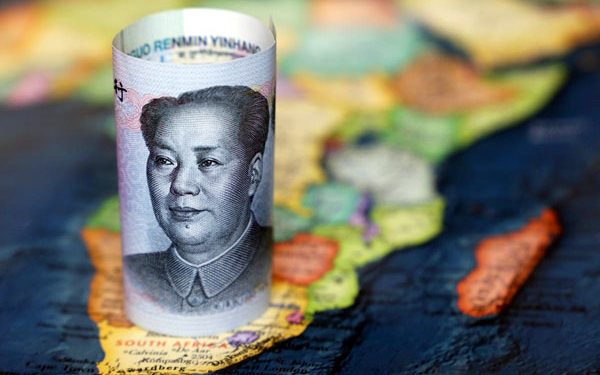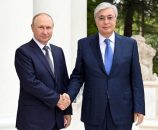After the change of government in the country, the China Pakistan Economic Corridor (CPEC) has become hottest topic. It has been further streamlined, systemized and strengthened in terms of policy cooperation, coordination and approval, allocation of funds and implementation of the projects.
Most recently, Federal Minister for Planning Development and Special Initiatives Ahsan Iqbal said Pakistan would follow the Chinese model of economic development, which he said was a miracle of modern times. He has become live energy in the execution of CPEC Phase-II in the country.
He upheld that the Chinese, modern economic development has successfully transformed Chinese economy, society, politics, civility and outlook which should be replicated in Pakistan especially on the ongoing projects of the CPEC.
It provides political stability, social solidarity and continuity of economic policies which succeeded to achieve economic miracles in the modern world. Its poverty eradication model has become example in the world which should be applied in Pakistan too.
He noted that unfortunately, Pakistan had always lacked political stability and continuity in economic policies due to which economic development has not been possible. Thus China development model holds the key of greater regional connectivity, social transformation, modernization and economic sustainability.
He said China’s industrial relocation was to take place in the year 2020 and “We did not have the infrastructure to benefit from this change. He further added that during this period, China’s industrial units were shifted to Vietnam and the Association of South-East Asian Nations (ASEAN) countries.
He maintained that in 2013, the government had started work on nine Special Economic Zones (SEZs) under CPEC but during the previous regime,” We could not complete even one of them which are very unfortunate. He claimed that if these SEZs were completed, China’s industrial relocation would have taken place in Pakistan today.”
He said Pakistan and China were starting work on several green energy projects which would help in improving the environment, adding that most of the solar and wind energy projects would start a new era of sustainable economic development in the country.
He said anti-environment industrial development had also played a role in spoiling the environment in the world and Pakistan had also suffered from this. “Today Pakistan is among the five major countries affected by environmental crises.”
On the other hand, Prime Minister Shehbaz Sharif said that the CPEC is laying the foundation for sustained indigenous economic modernisation.
In an interview with the Global Times, he said over the past 10 years, the construction of CPEC projects has helped Pakistan reduce the bottlenecks caused by past power shortages and weak infrastructure.
PM Shehbaz said the government will continue to work closely with China to enhance the momentum of cooperation between the two countries.
Regarding Pak-China friendship, he said the all-weather strategic partnership between Pakistan and China is deeply rooted in people’s hearts, covering all areas of bilateral cooperation.
PM Shehbaz further said that the two countries support each other on the issue of mutual core interests. Pakistan has always firmly supported the One China Policy and believes that Taiwan is its inalienable part, he added.
Moreover, the premier stated that Pakistan-China relations are an important factor for peace and stability in the region and the world.
He went on to say that the development strategy of the coalition government depends on how to repair the economic fundamentals that constrain us from realizing our existing potential.
Furthermore, PM Shehbaz said in order to stabilize the economy, we urgently need to lay the foundation for the long-delayed structural reforms, adding that the government also needs to deepen economic and trade relations with friendly countries.
In his concluding remarks, the prime minister said that public policy transformation from geopolitics to geo-economics represents a consensus that we should realise the potential of to accelerate Pakistan’s development.
He added that the core of our development strategy remains to safeguard the well-being of the Pakistani people and make Pakistan a self-reliant state.
To conclude, the government and policy makers of the country should try to associate the attainment of SDG 3 with CPEC. This can help attain the objective of socio-economic development, which is the core of both CPEC and SDGs.
In this regard, CPEC can contribute to health sector is through constructing health facilities. Construction of social health centers trauma centres, burn centres and drugs shops in the vicinity of CPEC projects can meet people’s health needs. Setting up tube-wells and water filtration plants as part of CPEC can resolve the issue of lack of clean drinking facilities in remote areas, especially in Sindh and K-P.
Under CPEC, Pakistan should think of constructing ‘medical cities’ in urban centres of all four provinces as well as G-B and AJK. The Pir Abdul Qadir Shah Jillani Institute of Medical Sciences in Gambat, Sindh is a classic example of a medical city with a cluster of hospitals and health centres equipped with modern facilities. In the ongoing second phase of CPEC, with a prime focus on socio-economic development, Pakistan can propose construction of medical cities in major urban centres.
In this connection, CPEC may further improve connectivity across urban and rural Pakistan through a network of roads and railway tracks. The first phase of CPEC focused on the improvement of road infrastructure across Pakistan. In terms of SDG 3 attainment, this factor is important to see how improved connectivity and mobility is helpful in bringing people closer to the health facilities. It is crucial that health facilities are accessible to people in remote and marginalised areas with little transport facilities.






